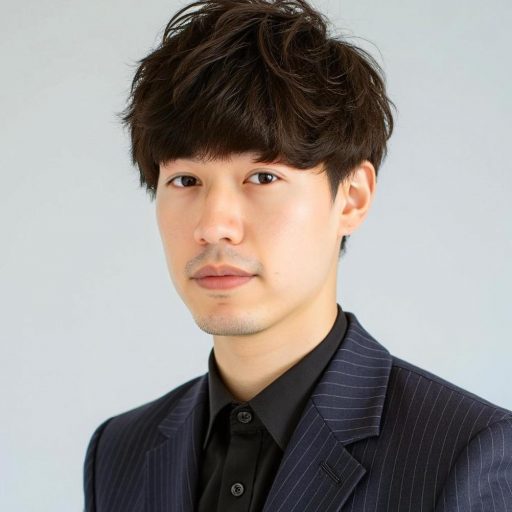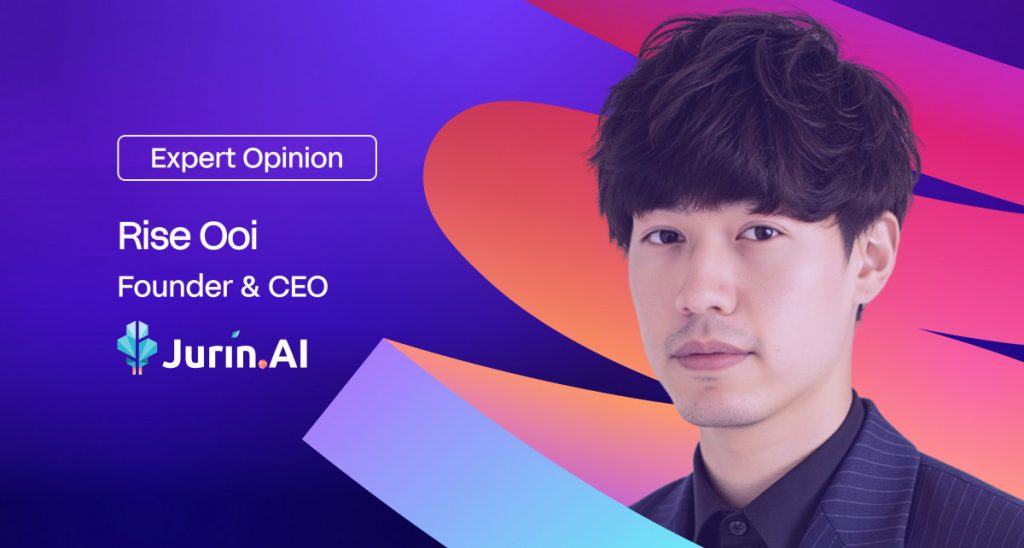Scaling Without Hiring: What Japan’s Shrinking Workforce Teaches the World About AI Adoption


In Brief
In Japan, companies are competing for workers, leading to a labor shortage that has been the primary cause of business foreclosures for five consecutive years. Executives are desperate for headcount, causing growth to stall due to lack of available labor.

In most countries, workers compete for jobs. In Japan, it’s the reverse—companies are competing for workers. And they’re losing.
If you want to find 1,000 English-speaking human phone agents, you’ll find them tomorrow in India or the Philippines. But if you want to find 10 Japanese-speaking phone agents? You’ll wait three months. And after all that, you might hire one — only to have them say “This job is not for me” and walk out two hours into training.
The first time I heard this, I laughed. Then I heard it again. And again. Twenty times from 20 different executives.
Labor shortage is the default state. Japan has experienced five consecutive years where labor scarcity has been the number one cause of business foreclosures. Executives are fed up. They’re not optimizing headcount — they’re desperate for any headcount.
I speak daily with logistics firms, hotel chains, and contact centers that have built healthy business models only to watch growth stall because they can’t find staff. The demand exists. Revenue is guaranteed. But there’s no labor to fulfil it. Not even expensive labor. Just none.
Japan’s Workforce Has Changed, and It’s Not Coming Back
You’d think this was a recruiting issue. But it’s actually cultural, generational, and systemic.
I’ve personally interviewed over 1,000 people for Jurin AI’s Japan office, and the most common line I’ve heard is: “I want a part-time job where I work 10 am-4 pm, four days a week, no weekends.”
And they’re dead serious. They don’t care about career paths. They care only if they can handle the pressure. The goal is to go about the day on autopilot and go home to play video games. (Don’t get me wrong, I love video games too, but there’s a difference between play and escape.)
This is the Gen Z norm: no ambition, no hunger, no financial drive. It’s a global trend, but Japan is the most extreme version I have seen. Just the desire to survive the day in the office, decompress, and escape.
Some blame Japan’s “Yutori” (relaxed) education system, which allegedly created a generation allergic to pressure and stripped away resilience. Others point to deeper issues like social stagnation. However, the data backs it up either way: only 6% of Japanese workers are engaged at work, which is among the lowest in the world.
Here’s a snapshot of how broken the system is: a friend’s company had an employee who consistently showed up at 10:15am, over an hour late. They tolerated it for months because, in this market, something is better than nothing. Eventually, they set a rule that everyone must start at 10am sharp to align with customer-facing operations. The employee quit. His reason: “I don’t want to wake up 15 minutes earlier.”
In a functioning labor market, that’s a fireable offense. In Japan’s market, that’s just a resignation you can’t afford.
AI Isn’t a Tool, But the Only Way Out
Japan’s demographic crisis isn’t news. But what it reveals, long before other countries get there, is a preview of how AI will, and must, evolve: not as a tool for efficiency, but as a necessity for survival.
The OECD reports that Japan’s labor force aged 15-64 dropped from 87 million in 1995 to just 73 million last year. By 2035, over half of Japan’s workers will be over the age of 50.
South Korea is on the same path. Europe and China aren’t far off. Even the U.S., for all its youthful edge, faces a shrinking birthrate and a burnout-prone workforce. These are all signs of a global labor crisis.
In the West, the dominant AI narrative is fear-based: automation is coming for your job. But that only makes sense if you assume there are enough people to do the job.
What if the real crisis is labor scarcity?
The world is aging. Japan just got there first. And it’s showing the world what happens when AI isn’t a novelty—it’s a necessity. Businesses here aren’t asking, “Should we try AI?” They’re asking, “How fast can we deploy it?” This is the urgency and inevitability of AI adoption in Japanese enterprises.
From Chatbot to Agent: Doing the Work vs Talking About It
While the Western world obsesses over generative video and AI companionship apps, Japan is becoming a quiet testbed for real, industrial-strength AI.
It’s now the era of full-stack AI agents that take over entire workflows: voice calls, emails, backend updates, customer support—end to end. Not just replies. Not just “copilots”. Fully autonomous systems that talk, think, act, and document what they did.
Traditionally chatbots are condition and branch-based, so impossible to maintain that even a minor deviation can crash the whole thing. Then came LLMs, and suddenly a lot of companies started slapping them onto those same chatbots and calling it “AI”. But most of these are just slightly smarter interfaces that read from static documents — and they’re miscalling it RAG.
AI agents are different because they don’t stop at Q&A. They take real-time requests and run actual CRUD operations (Create, Read, Update, Delete) on real-time, dynamic production databases. That means taking orders, updating inventories, scheduling deliveries, cancelling orders, updating customers, and so on. These transactions are sensitive, personalized, and securely tied to each customer’s account. No generic fluff like “our company can do X”. Real work.
And it isn’t about cost-cutting. These systems aren’t replacing human jobs. In Japan, there are no humans left to replace. Anything is better than nothing.
The shortage is so bad, companies are sending the smart people from the headquarters to do customer support — because they can’t hire anyone else.
One of our customers, a nationwide contact center operator, now uses Jurin AI voice agents to handle 80% of inbound calls. Their remaining human agents only manage edge cases. The outcome? Less stress, better pay, and higher retention. And those overqualified HQ staff have finally gone back to doing actual strategic work.
It made me think of how Google hires MIT grads to staff support roles for its Google Cloud Platform — not because they have to, but because they can. In Japan, it’s not a strategy. It’s desperation. Companies aren’t pulling in top talent for edge-case service — they’re plugging leaks with their last remaining lifeboats. No wonder Japanese grads are disengaged at the workplace.
There’s also an economic upside to this. Contact centers typically run on razor-thin 5% profit margins. If we automate just 10% of their calls and charge 50% of the value saved, that’s 5% of revenue, but saving 10% of the cost. That’s a full 5% profit bump. In other words, we’re doubling their bottom line.
And it goes deeper. Finding agents who can handle multilingual support, especially in English, is near impossible in Japan. Serving the expat and tourism economy adds another layer of pressure, but it’s rarely addressed in traditional operations. Add to that the emotional toll of 100 repetitive, often hostile calls a day — and you start to see why burnout is so high. An AI agent doesn’t get flustered. It doesn’t snap. It gives the same calm, accurate response whether it’s call one or call 100. It’s infinitely patient.
That’s why we often hear people say, “AI solved my problem in 20 minutes — something my doctor couldn’t do in 20 years.” Often it’s not because these professionals don’t have the right answers. It’s because they don’t have infinite patience or empathy, which AI does.
AI is also much cheaper, and fast, processing the entire frontier of human knowledge, pulling context, then reasoning through it to produce reasoned answers in seconds. That’s not a skillset most humans can replicate.
Japanese enterprises are not adopting AI because it’s cool. They’re adopting it because without it, the business dies.
Japan Was the Hardest Sandbox, and That’s Why It Worked
We didn’t set out to build autonomous agents in the very beginning. The market forced our hand.
When I first had the idea of an AI agent, my thesis was simple: AI should be able to “do the job,” not just talk about it.
Then the Japanese market became my proving ground. High compliance requirements, complex legacy systems, and a cultural premium on politeness made it both hard and high-value.
And the results speak for themselves. Within just one year of founding, we’ve become one of Japan’s fastest-growing startups and the strongest contender to become Japan’s first decacorn.
Most of the world still thinks of AI as “efficiency software”.
Japan sees it as survival infrastructure.
As talent shortages hit other countries, AI adoption will follow the same curve: from curiosity → convenience → critical. By then, companies that built the right muscle—training AI agents, designing autonomous workflows, navigating compliance, will be lightyears ahead.
We’ve seen what happens when AI agents go from side project to core operating layer. And we’ve seen the future of work without enough workers.
It’s time we stop viewing AI through the lens of hype cycles—and start seeing it through the lens of demographic reality.
Disclaimer
In line with the Trust Project guidelines, please note that the information provided on this page is not intended to be and should not be interpreted as legal, tax, investment, financial, or any other form of advice. It is important to only invest what you can afford to lose and to seek independent financial advice if you have any doubts. For further information, we suggest referring to the terms and conditions as well as the help and support pages provided by the issuer or advertiser. MetaversePost is committed to accurate, unbiased reporting, but market conditions are subject to change without notice.
About The Author
Rise Ooi is a three-time tech founder, engineer, and investor known for identifying billion-dollar opportunities early. He helped scale Applied Intuition into a multi-billion-dollar unicorn by building its Asian presence from the ground up and now leads Jurin AI, where he’s assembling a world-class team to reshape workplace productivity across Asia-Pacific. A former AI scientist at Japan’s national labs, Rise brings deep technical and global expertise to everything he builds.
More articles

Rise Ooi is a three-time tech founder, engineer, and investor known for identifying billion-dollar opportunities early. He helped scale Applied Intuition into a multi-billion-dollar unicorn by building its Asian presence from the ground up and now leads Jurin AI, where he’s assembling a world-class team to reshape workplace productivity across Asia-Pacific. A former AI scientist at Japan’s national labs, Rise brings deep technical and global expertise to everything he builds.

















































